When AI Gets It Wrong: Addressing AI Hallucinations and Bias

At a Glance
Generative AI has the potential to transform higher education—but it’s not without its pitfalls. These technology tools can generate content that’s skewed or misleading (Generative AI Working Group, n.d.). They’ve been shown to produce images and text that perpetuate biases related to gender, race (Nicoletti & Bass, 2023), political affiliation (Heikkilä, 2023), and more. As generative AI becomes further ingrained into higher education, it’s important to be intentional about how we navigate its complexities.
Biased Content
Problems with bias in AI systems predate generative AI tools. For example, in the Gender Shades project, Buolamwini (2017) tested AI-based commercial gender classification systems and found significant disparities in accuracy across different genders and skin types. These systems performed better on male and lighter-skinned faces than others. The largest disparity was found in darker-skinned females, where error rates were notably high.
Generative AI tools present similar problems. For example, a 2023 analysis of more than 5,000 images created with the generative AI tool Stable Diffusion found that it simultaneously amplifies both gender and racial stereotypes (Nicoletti & Bass, 2023). These generative AI biases can have real-world consequences. For instance, adding biased generative AI to “virtual sketch artist” software used by police departments could “put already over-targeted populations at an even increased risk of harm ranging from physical injury to unlawful imprisonment” (Mok, 2023). There’s also a risk that the veneer of objectivity that comes with technology tools could make people less willing to acknowledge the problem of biased outputs (Nicoletti & Bass, 2023). These issues aren’t unique to image generators, either; researchers and users have found that text generators like ChatGPT may also produce harmful and biased content (Germain, 2023).
Inaccurate Content
Generative AI tools also carry the potential for inaccurate and misleading outputs. Content generated by AI tools like ChatGPT, Bing, and Bard have been found to provide users with fabricated data that appears authentic. These inaccuracies are so common that they’ve earned their own moniker; we refer to them as “hallucinations” (Generative AI Working Group, n.d.).
For an example of how AI hallucinations can play out in the real world, consider the legal case of Mata v. Avianca. In this case, a New York attorney representing a client’s injury claim relied on ChatGPT to conduct his legal research. The federal judge overseeing the suit noted that the opinion contained internal citations and quotes that were nonexistent. Not only did the chatbot make them up, it even stipulated they were available in major legal databases (Weiser, 2023).
As we integrate AI into teaching and learning, it’s important to be wary of its limitations.
Why is AI Flawed?
Generative AI systems can produce inaccurate and biased content for several reasons:
- Training Data Sources: Generative AI models are trained on vast amounts of internet data. This data, while rich in information, contains both accurate and inaccurate content, as well as societal and cultural biases. Since these models mimic patterns in their training data without discerning truth, they can reproduce any falsehoods or biases present in that data (Weise & Metz, 2023).
- Limitations of Generative Models: Generative AI models function like advanced autocomplete tools: They’re designed to predict the next word or sequence based on observed patterns. Their goal is to generate plausible content, not to verify its truth. That means any accuracy in their outputs is often coincidental. As a result, they might produce content that sounds plausible but is inaccurate (O’Brien, 2023).
- Inherent Challenges in AI Design: The technology behind generative AI tools isn’t designed to differentiate between what’s true and what’s not true. Even if generative AI models were trained solely on accurate data, their generative nature would mean they could still produce new, potentially inaccurate content by combining patterns in unexpected ways (Weise & Metz, 2023).
In short, the “hallucinations” and biases in generative AI outputs result from the nature of their training data, the tools’ design focus on pattern-based content generation, and the inherent limitations of AI technology. Acknowledging and addressing these challenges will be essential as generative AI systems become more integrated into decision-making processes across various sectors.
Navigate AI’s Pitfalls
Consider these strategies to help mitigate generative AI tools’ issues with hallucination and bias.
Critically Evaluate AI Outputs
Unlike humans, AI systems do not have the ability to think or form beliefs. They operate algorithmically based on their training data, without any inherent capacity for reasoning or reflection. AI-generated content can sometimes stray off-topic or might include irrelevant information because deep learning models can produce outcomes that are seemingly coherent but lacking depth (Cano et al., 2023) Given this context, the human touch remains irreplaceable. Users must approach AI outputs with a critical eye and evaluate them with human judgement (Silberg & Manyika, 2019).
Diversify Your Sources
The imperfections in AI arise from a variety of factors. For one, different AI systems interpret and respond to human prompts in unique ways, leading to diverse outcomes (Heikkilä, 2023) that may differ not only in content but also in quality. As such, it’s important to always cross check the accuracy of AI-generated content. The most important strategy is to cross-reference AI output with reliable sources such as expert publications that you access through the MIT Libraries. You may also wish to compare outputs from multiple AI platforms to get a better sense of the quality of results that each can produce.
Conclusion
The world of higher education is rapidly embracing AI, and these new tools promise both opportunities and challenges. Generative AI offers great potential to improve how we teach, research, and operate. However, it’s essential to remember that AI outputs can produce falsehoods and can amplify harmful biases. In short, while AI is a powerful tool, the human touch remains crucial. By working together, we can make the most of what AI offers while mitigating its known limitations.
References
Buolamwini, J. (2017). Gender shades: Intersectional phenotypic and demographic evaluation of face datasets and gender classifiers. DSpace@MIT. https://dspace.mit.edu/handle/1721.1/114068
Cano, Y. M., Venuti, F., & Martinez, R. H. (2023). ChatGPT and AI text generators: Should academia adapt or resist? Harvard Business Publishing. https://hbsp.harvard.edu/inspiring-minds/chatgpt-and-ai-text-generators-should-academia-adapt-or-resist
Generative AI Working Group. (n.d.) How can we counteract generative AI’s hallucinations? Digital, Data, and Design Institute at Harvard. https://d3.harvard.edu/how-can-we-counteract-generative-ais-hallucinations
Germain, T. (2023, April 13). ‘They’re all so dirty and smelly:’ study unlocks ChatGPT’s inner racist. Gizmodo. https://gizmodo.com/chatgpt-ai-openai-study-frees-chat-gpt-inner-racist-1850333646
Heikkilä, M. (2023, August 8). AI language models are rife with different political biases. MIT Technology Review. https://www.technologyreview.com/2023/08/07/1077324/ai-language-models-are-rife-with-political-biases
McCormack, M. (2023, April 17). Educause quickpoll results: Adopting and adapting to generative AI in higher ed tech. Educause Review. https://er.educause.edu/articles/2023/4/educause-quickpoll-results-adopting-and-adapting-to-generative-ai-in-higher-ed-tech
Nicoletti, L., & Bass, D. (2023, June 14). Humans are biased. Generative AI is even worse. Bloomberg Technology + Equality. https://www.bloomberg.com/graphics/2023-generative-ai-bias
O’Brien, M. (2023, August 1.) Chatbots sometimes make things up. Is AI’s hallucination problem fixable? AP News. https://apnews.com/article/artificial-intelligence-hallucination-chatbots-chatgpt-falsehoods-ac4672c5b06e6f91050aa46ee731bcf4
Radford, A., Wu, J., Child, R., Luan, D., Amodei, D., & Sutskever, I. (2019). Language models are unsupervised multitask learners. OpenAI Blog, 1(8), 9. https://d4mucfpksywv.cloudfront.net/better-language-models/language_models_are_unsupervised_multitask_learners.pdf
Shaw, C., Bharadwaj, R., NeJame, L., Martin, S., Jason, N., & Fox, K. (2023, June 20). Time for class 2023: Bridging student and faculty perspectives on digital learning. Tyton Partners. https://tytonpartners.com/time-for-class-2023
Silberg, J., & Manyika, J. (2019, June 6). Tackling bias in artificial intelligence (and in humans). McKinsey & Company. https://www.mckinsey.com/featured-insights/artificial-intelligence/tackling-bias-in-artificial-intelligence-and-in-humans
Thomson, T., & Thomas, R. (2023, July 9). Ageism, sexism, classism, and more: 7 examples of bias in AI-generated images. The Conversation. https://theconversation.com/ageism-sexism-classism-and-more-7-examples-of-bias-in-ai-generated-images-208748
Weise, K., & Metz, C. (2023, May 1). When A.I. chatbots hallucinate. The New York Times. https://www.nytimes.com/2023/05/01/business/ai-chatbots-hallucination.html
Weiser, B. (2023, May 27). Here’s what happens when your lawyer uses ChatGPT. The New York Times. https://www.nytimes.com/2023/05/27/nyregion/avianca-airline-lawsuit-chatgpt.html

